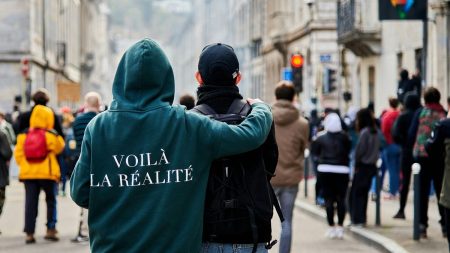An independent group of experts funded by the US government has recommended that women start getting screened for breast cancer every other year starting at age 40, instead of waiting until age 50. The US Preventive Services Task Force (USPSTF) believes that this change could make a significant difference in reducing breast cancer deaths, especially for Black women who are more likely to die from the disease. The recommendation comes as more women in their 40s are being diagnosed with breast cancer, with rates increasing by two percent annually since 2015. By starting screening at age 40, the USPSTF estimates that nearly 20 percent more lives could be saved from breast cancer overall.
Breast cancer is one of the most common forms of cancer and a leading cause of female mortality in the EU. In 2022, breast cancer was the most diagnosed cancer in the EU, with an estimated 380,000 cases. The European Commission recently lowered the age recommendations for mammography screenings from 50 to 45, but women aged between 40 and 44 who do not have symptoms are not included in the screening guidelines. The Commission aims to increase screening uptake for breast, colorectal, and cervical cancer to 90 percent of those who qualify by 2025, as part of Europe’s Beating Cancer Plan.
Denmark, Finland, and Sweden are the top EU states for breast cancer screening, with 80 to 83 percent of women between the ages of 50 and 69 receiving a mammogram in the last two years, according to 2021 data. Malta and Slovenia also have high screening rates, while Bulgaria, Cyprus, Slovakia, Hungary, and Latvia have the lowest rates ranging from 20.6 to 30.8 percent. Greece and Cyprus have the highest availability of mammography units per 100,000 inhabitants, while Germany, France, Romania, and Poland have the lowest availability of units, ranging from 0.5 to 1.1 units.
The impact of the COVID-19 pandemic on preventive healthcare and screening programmes across EU hospitals must be taken into account when analyzing data for 2021. The new recommendations for earlier screening for breast cancer in the US may help address disparities in breast cancer treatment and mortality rates, including the fact that the cancer death rate is 40 percent higher among Black women who develop aggressive forms of the disease at a younger age. The USPSTF believes that starting screening at age 40 could save nearly 20 percent more lives from breast cancer overall, with even greater potential benefits for Black women.
Overall, the USPSTF’s recommendation to lower the age for breast cancer screening from 50 to 40 could have a significant impact on reducing breast cancer deaths, especially among women in their 40s who are increasingly being diagnosed with the disease. The European Commission’s efforts to increase screening uptake for breast cancer, as well as colorectal and cervical cancer, align with the goal of reducing cancer mortality rates across the EU. Improving access to mammography units and screening programmes, especially in countries with lower screening rates, will be key to achieving this goal and improving outcomes for those at risk of developing breast cancer.









